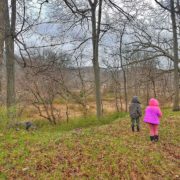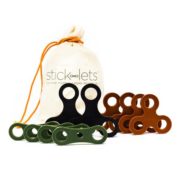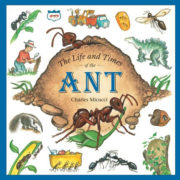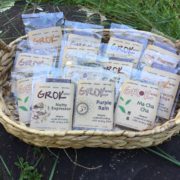Winter Gear for Kids, aka Wool is Your Friend
When you want to head outdoors in the cold, wintry and snowy weather, proper gear makes all the difference. It means a better chance at having happier families, spending more time out in nature, and receiving all the benefits the outdoors has to offer. But when starting from scratch, the idea of purchasing or managing gear can be a tad overwhelming. It's also possible you might wear ineffective clothes - i.e. wearing half your closet, but still feeling chilly - how is that possible? We want to give you a relatively easy five step breakdown of what you need to get started. So whether you're a seasoned outdoor family or ready to give it a whirl for the first time, here's a quick guide to winter gear.
Step 1. Base Layer, Moisture Control
This is the first of three layers which will together provide you maximum protection from the elements. Your base layer - think long underwear - should wick natural sweat away from your body. Yes, it's winter and somehow you're still going to sweat. Go figure. Choose fabric which pulls the sweat away, rather than trap it in which only results in feeling cold. Your ideal choice? Merino wool or silk.
Step 2. Mid Layer, Insulation
This is the second of three layers which protect you from the cold. On top of your base layer, wear a mid layer to keep in warmth. No need for bulky sweaters. Go for fleece or wool again for a combination that is breathable, lightweight and highly effective.
Step 3. Shell Layer, Protection
Your final layer is your shell. This protects you from the elements, but should be just as breathable and allow for your body to move. Again no need for bulk which has a tendency to restrict movement. If it's effective, it can be lighter weight. There are a lot of options to choose from here, so let your wallet and your activity be the guide to what you ultimately purchase. Look for waterproof or water-resistent, breathable material in your snow pants and your snow jacket.
Step 4. Extremities
Now let's cover those hands, feet and head. For hands, mittens will be warmer than gloves, but decide based on which your child prefers. Look for warmth, movement and wrist coverage. For feet, you can apply the same three layer process as you did your body - wicking sock, wool sock + heavier sock - or you can opt for a stand alone wool sock and see how that goes before adding more layers. Just avoid cotton. Then find quality boots, ideal for below freezing temperature, which fit a foot with socks and extend up the leg. For head coverage, can you guess? Look for wool - either as a balaclava or a hat which covers your child's ears. Your snow jacket hood should take care of the protection.
Step 5. Extras
Less about what goes on your body and more about what goes along with you on your outing. Consider a backpack - great to have as children peel off and put back on layers, along with snacks - playing outdoors is a workout! Stock it with cold water, high-protein snacks, and a thermos with hot tea, cocoa or soup. Also, keep on hand a change of clothes depending on your child's habits. You know how your child feels most comfortable as you travel to and from your excursion. Plan accordingly.
Click here for a gear guide to other seasons.
As Forest School For All members, we offer monthly promotions on some of our favorite gear providers. Join here to start receiving these and other outdoor play benefits.









